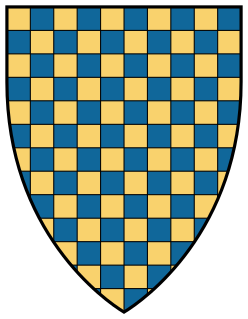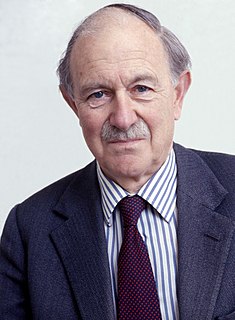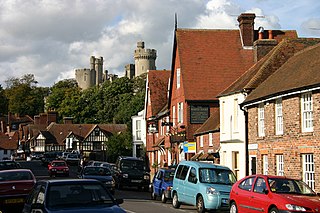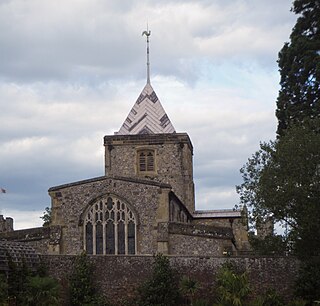
The Duke of Norfolk is the premier duke in the peerage of England, and also, as Earl of Arundel, the premier earl. The Duke of Norfolk is, moreover, the Earl Marshal and Hereditary Marshal of England. The seat of the Duke of Norfolk is Arundel Castle in Sussex, although the title refers to the county of Norfolk. The current duke is Edward Fitzalan-Howard, 18th Duke of Norfolk. The dukes have historically been Catholic, a state of affairs known as recusancy in England.

Arundel Castle is a restored and remodelled medieval castle in Arundel, West Sussex, England. It was established by Roger de Montgomery on Christmas Day 1067. Roger became the first to hold the earldom of Arundel by the graces of William the Conqueror. The castle was damaged in the English Civil War and then restored in the 18th and 19th centuries.

Earl of Arundel is an earldom and the oldest extant peerage in the Peerage of England. It is currently held by the Duke of Norfolk, and is used by his heir apparent as a courtesy title. It was created c. 1138 for the Norman baron Sir William d'Aubigny. Its origin was the earlier grant by Henry I to his second wife Adeliza of the forfeited "honour" of Arundel, which included the castle and a large portion of Sussex. After his death she married William, who thus became master of the lands, and who from about the year 1141 is variously styled earl of Sussex, of Chichester, or of Arundel. His first known appearance as earl is at Christmas 1141. Until the mid-13th century, the earls were also frequently known as Earl of Sussex, until this title fell into disuse. At about the same time, the earldom fell to the originally Breton FitzAlan Family, a younger branch of which went on to become the Stuart Family, which later ruled Scotland.

Henry FitzAlan, 19th Earl of ArundelKG was an English nobleman, who over his long life assumed a prominent place at the court of all the later Tudor sovereigns, probably the only person to do so.

Edward William Fitzalan-Howard, 18th Duke of Norfolk,, styled Earl of Arundel between 1975 and 2002, is a British peer, Earl Marshal and son of Miles Fitzalan-Howard, 17th Duke of Norfolk.

Earl of Surrey is a title in the Peerage of England that has been created five times. It was first created for William de Warenne, a close companion of William the Conqueror. It is currently held as a subsidiary title by the Dukes of Norfolk.

Lewes Castle is a medieval castle in the town of Lewes in East Sussex, England. Originally called Bray Castle, it occupies a commanding position guarding the gap in the South Downs cut by the River Ouse and occupied by the towns of Lewes and Cliffe.

Major General Miles Francis Stapleton Fitzalan-Howard, 17th Duke of Norfolk, was a British Army general and peer. He was the eldest son of Bernard Fitzalan-Howard, 3rd Baron Howard of Glossop, and his wife Mona Stapleton, 11th Baroness Beaumont. In 1975, he inherited the Dukedom of Norfolk from his second cousin once removed, making him the premier duke in the Peerage of England.

Bernard Marmaduke Fitzalan-Howard, 16th Duke of Norfolk,, styled Earl of Arundel and Surrey until 1917, was a British peer and politician. He was the eldest surviving son of Henry Fitzalan-Howard, 15th Duke of Norfolk, who died when Bernard was only 9 years old. His mother was Gwendoline Herries, 12th Lady Herries of Terregles, and he inherited her peerage when she died in 1947.

Henry Fitzalan-Howard, 15th Duke of Norfolk,, styled Baron Maltravers until 1856 and Earl of Arundel and Surrey between 1856 and 1860, was a British Unionist politician and philanthropist. He served as Postmaster General between 1895 and 1900, but is best remembered for his philanthropic work, which concentrated on Roman Catholic causes and the city of Sheffield.

The Cathedral Church of Our Lady and St Philip Howard is a Roman Catholic cathedral in Arundel, West Sussex, England. Dedicated in 1873 as the Catholic parish church of Arundel, it became a cathedral at the foundation of the Diocese of Arundel and Brighton in 1965. It now serves as the seat of the Bishop of Arundel and Brighton.
Georgina Susan Fitzalan-Howard, Duchess of Norfolk, is the wife of Edward William Fitzalan-Howard, 18th Duke of Norfolk. She was born Georgina Susan Gore, the younger daughter of John Temple ("Jack") Gore (1931-2018) and his first wife Serena Margaret Mounsey. Her parents divorced in 1969.
Robert Abraham (1773–1850) was an English building surveyor and later architect in London. He was the son of a builder and was educated as a surveyor as a pupil of James Bowen. He turned to architecture after 1818, and was chiefly employed by the leading Roman Catholic families in England, including the Duke of Norfolk and the Earl of Shrewsbury.

Tortington is a small village in the Arun District of West Sussex, England. It lies between the Arundel to Ford and the Arundel to Chichester roads, 1.6 miles (2.6 km) southwest of Arundel.
Alice de Warenne, Countess of Arundel was an English noblewoman and heir apparent to the Earldom of Surrey. In 1305, she married Edmund FitzAlan, 9th Earl of Arundel.
Joan de Beauchamp, Baroness Bergavenny was an English noblewoman, and the wife of William de Beauchamp, 1st Baron Bergavenny of the Welsh Marches.

Alan Percy (c.1480-1560) was an English churchman and academic, Master of St John's College, Cambridge, and later Master of Trinity College, Arundel which he surrendered to Henry VIII in 1545.

















